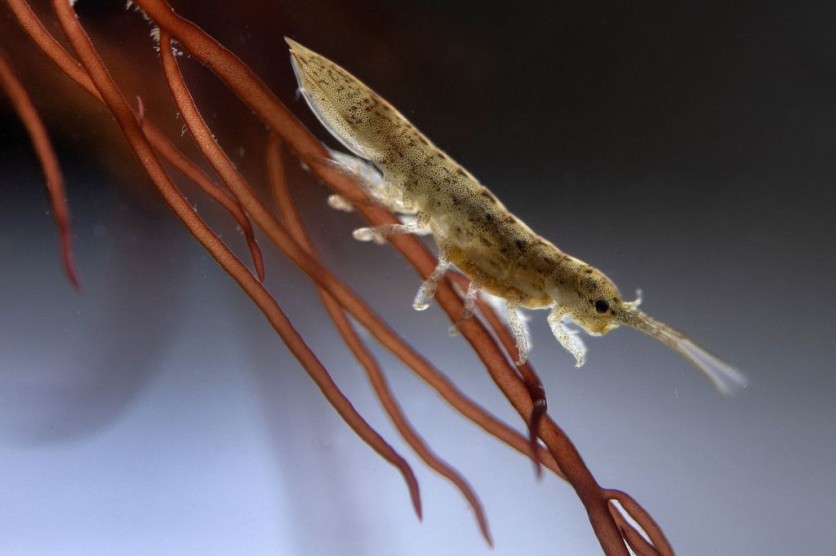In the unexplored depths of The Bahamas, a newfound animal emerges—meet Booralana nickorum, the latest addition to the animal kingdom.
This recently classified species belongs to the cirolanid isopod family, marking only the second of its genus identified in the Western North Atlantic.
If you have seen isopods in alien movies you watched on TV, their look is nowhere far from these cockroach-looking species.
Cirolanid Isopods: Deep-Sea Cousins of Roly-Polies

Descending to a depth of approximately 1,800 feet in the Exuma Sound, southeast of Nassau, this cirolanid isopod reveals itself.
Resembling terrestrial roly-polies, these crustaceans are distinct members of the cirolanid isopod family. Booralana nickorum, measuring a mere 2.17 inches, stands as a smaller relative compared to the giant isopod.
What's unique about the roly-poly bug?
Discovered during dives led by the Cape Eleuthera Institute and OceanX in 2019, the isopod's uniqueness stems from meticulous physical examinations rather than genetic analysis.
Despite its pinky-length stature, Booralana nickorum plays a vital role in its habitat, likely sustaining on detritus cascading down the slope of Exuma Sound.
A Sci-Fi Encounter in the Deep
Describing the deep-sea discovery as akin to a "sci-fi movie," ecologist Oliver Shipley from Stony Brook University shares the surreal experience of exploring the isopod's habitat.
"Seagrass, mangroves, all that sort of stuff gets swept off the shelves and basically dumped right down into this deep-sea community. And that's really important, because the more energy there is, the better the chances are that there are higher levels of biodiversity down there as well." Shipley told Gizmodo in a video call.
The Caribbean's deep-sea ecosystems, despite their mesmerizing potential for discovery, remain significantly underexplored, providing fertile ground for scientific revelations.
Biodiversity in the Dark
The depths of the Caribbean's deep sea hold hidden treasures, from Galápagos coral reefs to Costa Rican deep sea octopus nurseries.
As explorers uncover pockets of biodiversity, the looming question revolves around preserving these pristine environments amid increasing human activity.
The Enigmatic Deep-Sea World
Booralana nickorum symbolizes the enigmatic wonders concealed in the ocean's depths. With Caribbean deep-sea ecosystems representing a vast frontier awaiting exploration, each discovery emphasizes the urgency of protecting these untouched places from the encroachment of human activities.
To view the study titled "A new species of deep-sea Booralana Bruce, 1986 (Crustacea: Isopoda: Cirolanidae) from The Bahamas, Western North Atlantic," visit Zootaxa for more information.
The isopod is only one of many weird deep-sea creatures you might encounter in the depths of the oceans. Beneath the waves, some bizarre-looking animals you can see lurking underwater including a peacock mantis shrimp, frogfish, Christmas tree worm, squidworm, Sea angel, and red-lipped batfish to name a few.

ⓒ 2026 TECHTIMES.com All rights reserved. Do not reproduce without permission.




